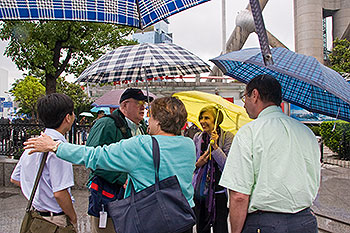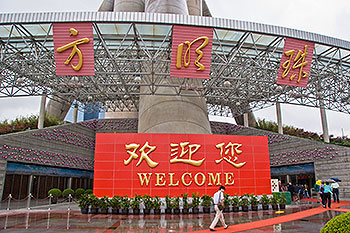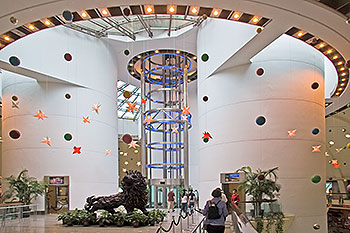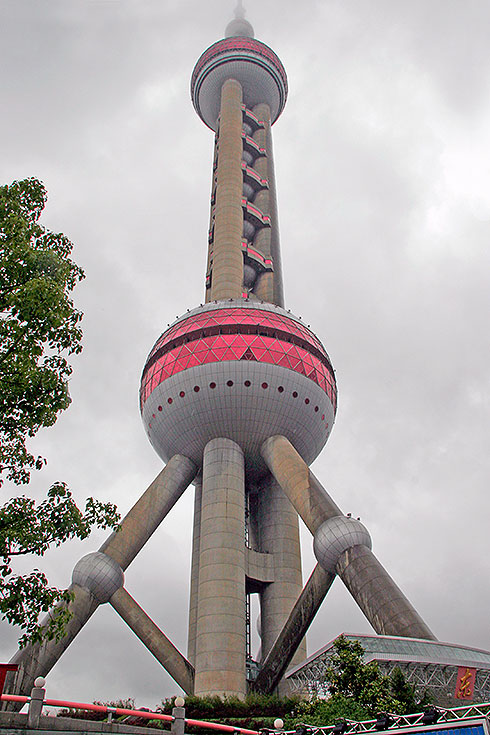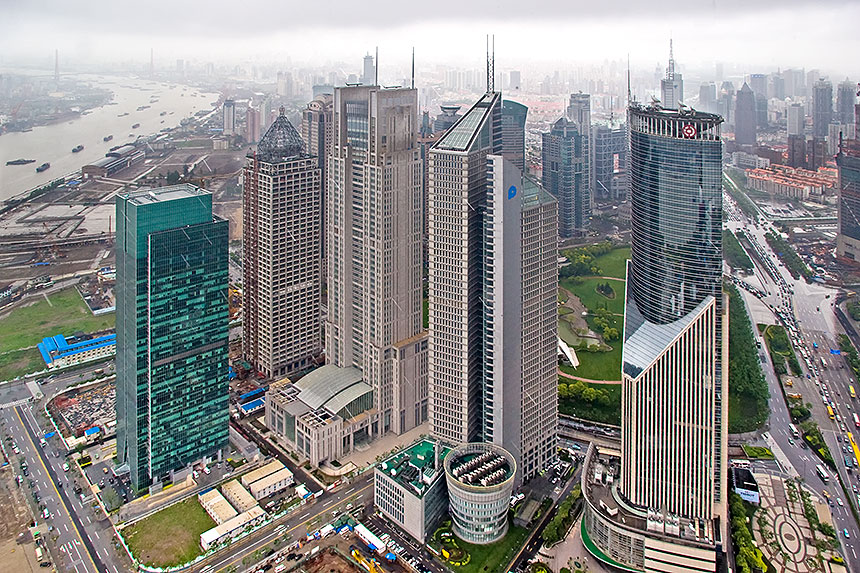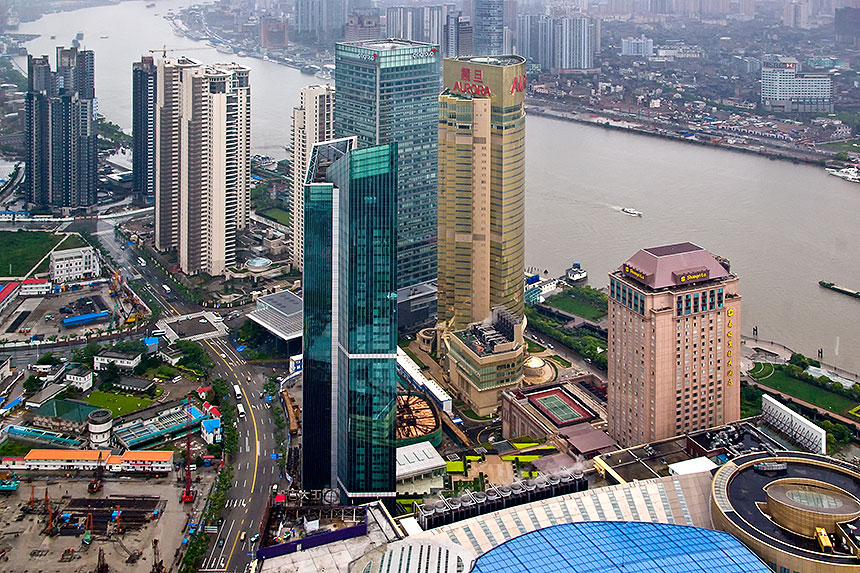Shanghai, May 18: Skyscrapers and an Emphatically Modern City; The Oriental Pearl Tower
The transition from Qin Dynasty China to modern day Shanghai (separated in time by a mere 2200 years) is one of dramatic contrast. We had flown here from Xi’an the previous evening, and by the time we checked into our hotel and had dinner it was dark.
This morning we endured Shanghai’s legendary traffic congestion for a two hour drive from our hotel to the Oriental Pearl Tower (next page). Everywhere we looked we saw construction of modern buildings -- in many cases among the world’s tallest buildings. While it is certainly still possible to see older buildings (particularly in the area of the Bund, where colonial-era buildings predominate) there is no missing the fact that Shanghai is determined to be among the world’s most up to date cities, with world-class skyscraper architecture.
This was the first rainy day we had encountered on our tour; this rain was caused by a typhoon that was pounding the China coast further south. The winds we encountered were only intermittently brisk, but we did find good use for the umbrellas that had been kindly given to us by our BiMBA hosts.
In British colonial times after the Treaty of Nanking, Shanghai became a cosmopolitan center of high living to the point of decadence. Shanghai became the third largest financial center of the world, and foreign nationals from Britain, France, the US and Japan each lived in enclaves known as “concessions”. After a period of decline under Communist control, the city began a revival in the 1990s, which continues at breathtaking pace. The current population exceeds 13 million.
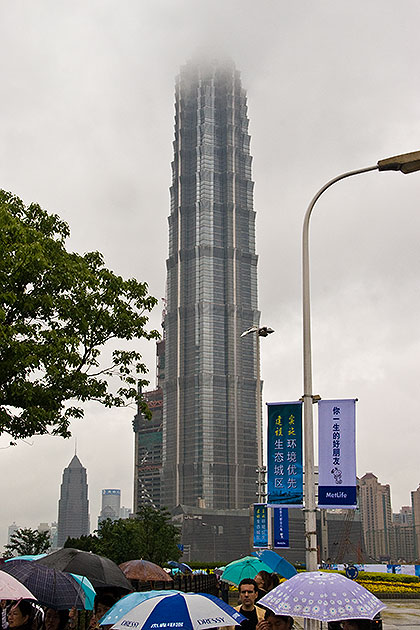
Jin Mao Tower, 1380', 88 floors, 1998
The Oriental Pearl Tower
As recently as the 1980s, the area of Pudong, across the Huangpu River from the Bund, was a run-down crime-ridden area, with Shanghai’s poorest residents and worst crime. Then in 1990 it was declared a Special Economic Zone, and since then has rapidly developed with some of the world’s tallest buildings (shown previous, this and next pages).
Overlooking this Pudong New Area of Shanghai, the iconic Oriental Pearl Television Tower dominates the city’s skyline. It is China’s tallest structure, at 1535 feet, and was completed in 1994. Its boldly modern architectural style, created with cylinders and spheres and knobby joints, looks a bit like something built from a child’s Tinker Toy set, but it is a visual delight.
The entrance and interior lobby are as bold as the structure itself. There are three observation levels; upon entering we proceeded directly to the elevators and visited two of them, the uppermost being 350 meters (1148 feet) from the ground. Even though it was raining, there were commanding views of the city, and we could look down on all of the other tall buildings.
